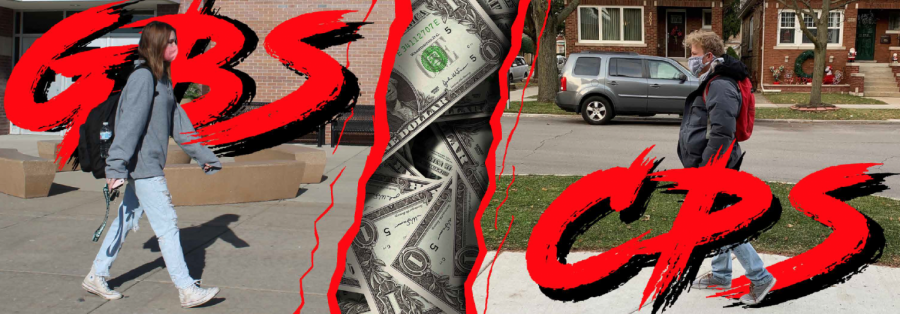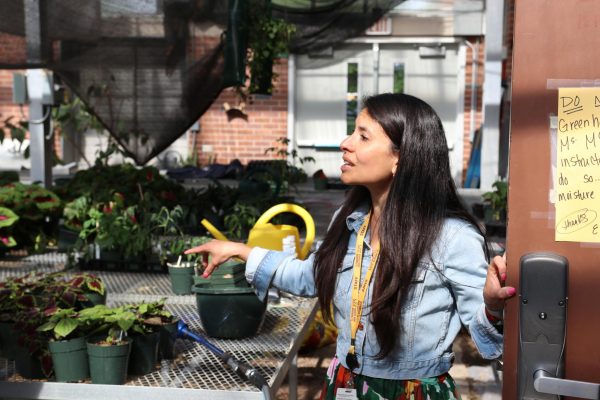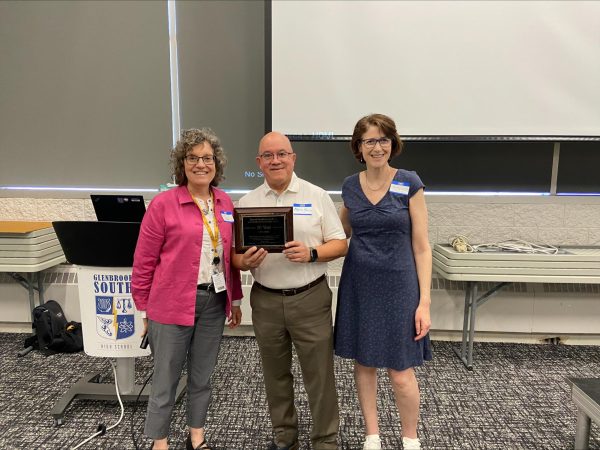A divide: The college resource opportunity gap
December 18, 2020
As seniors anxiously await admission decisions from universities, a looming question may run through their minds: “Did my school do everything to prepare me for college?”
Named the 17th best public high school in Illinois by US World News and Report annual rankings, South’s reputation for academic excellence can be identified by its ability to provide students with ample resources for college preparation. Other less resourced schools in the Chicagoland area, however, have struggled to assist their students in the same college admissions process, according to Kelli Hobson, former Chicago Public Schools (CPS) teacher.
Hobson finds that the difference in school resources provided is a result of how tax dollars are distributed into school systems. The location of a school drives its ability to provide resources to its students, Hobson said, creating a discrepancy between schools in high-tax areas and those not.
“Clearly, areas with higher taxes will be allocated more resources, allowing them to hire more case managers and social workers,” Hobson said. “They can also hire more college counselors, whereas [CPS] is mainly composed of low-income Black and Brown students. Are their property taxes going towards their schools? Yes, but it’s not enough to resource them the way that they need.”
Northside College Prep, a selective-enrollment CPS school ranked the second best high school in Illinois with an enrollment of 1,078 students, is comprised of 43 percent low income students and is spending $11,544 per student in 2020, according to data from the Illinois Report Card, Illinois’s official source for information about public schools. Northside students feel that, although they are independently motivated to succeed, the school does provide them with resources to prepare for college. Junior Ewan Grant, a student at Northside, attributes the varying amounts of college resources among CPS schools as a result of differences in funding.
“Selective enrollment [schools are better] funded than the schools that my friends go to,” Grant said. “Students who go to Northside are better prepared for college than lower ranked high schools, as we are given more resources due to a big difference in funding. [Counselors] assist in helping us decide what we want to major in and focus on our main goals for college. It’s a very academically competitive environment.”
CPS.edu states that CPS uses a Student-Based Budgeting (SBB) system to allocate funds to schools, by which money is siphoned to schools based on their enrollment. In essence, the more students a school has, the more budget it is allocated to provide adequate resources for them. CPS also offers supplemental funding for low-income students, an effort to create equity for their highest-need students.
The push to create college resource equity between high schools is spearheaded by LINK Unlimited, a 50-year-old nonprofit organization that works with Black students in Chicago to increase their access to higher education. Hobson, also the Vice President of LINK Unlimited, explained that the program matches up incoming freshmen with volunteer adult sponsors who offer them guidance as well as academic support and college counseling.
“Right now, LINK is focusing on neighborhoods within Chicago that have been underserved and we know, based on the performance ratings, have students that are not adequately prepared to go to a high performing college preparatory high school and, in turn, get into a very good college,” Hobson said.
With 94 percent of South’s class of 2020 going on to pursue further formal education, John Klasen, South’s director of college counseling, attributes South’s success in college preparation to the number of resources available to students, including individual meetings with counselors, college fairs and workshops that begin as early as sophomore year. These resources are the result of ample funding, as South is spending $22,697 per student in 2020 and only 18 percent of students are low-income, according to data from the Illinois Report Card.
“There are two parts of [our ability to offer so many resources],” Klasen said. “There’s the contact piece, where I am fortunately able to travel and go to these schools and have these contacts. But we also compensate [speakers and college representatives]. It’s not a big compensation, but that can obviously be the obstacle for some schools where that financial piece [is difficult], where they maybe don’t have the budget that we have.”
The CPS district requires students to formulate a post-high school plan before graduating, and they indicate that college coaches are provided at select high schools, according to CPS.edu. The website also outlines instructions on how to access Naviance, an online college application platform, as well as information about SAT dates and registration.
“Learn.Plan.Succeed. is the district’s initiative and graduation requirement for ensuring all students develop and commit to a postsecondary plan prior to high school graduation,” the CPS website said. “All CPS schools have counselors to address the academic, social/emotional, and postsecondary planning needs of all students. Some district schools offer coaches to assist students with postsecondary planning and considering options for life beyond high school.”
Members of the CPS community, including Andrew Sundberg, former William Taft High School student, have felt the challenges of the district’s approach to college preparation. Sundberg, among others, felt that preparing for college was an independent responsibility, more so than a process supported by Taft, which is 52 percent low-income students and is spending $11,013 per student in 2020. He noticed what he described as an “opportunity gap” between himself and students who attended more “sought-after” high schools.
“I don’t think the school prepped us well, application wise, for college and I definitely noticed that other friends [at better schools] had more help for college,” Sundberg said. “[Taft] gives you an advisor but it’s more on you, and if you have parents and other people pushing you to do better.”
Junior Jasmine Lozano attends Muchin College Prep, a CPS school in downtown Chicago, and noted that the only college representatives who visit her school are from local Chicago universities whereas at South, anywhere from 200 to 250 college representatives visit the high school from September to October every year, according to Klasen.
“I think that South is a target for a lot of schools for a couple of reasons,” Klasen said. “Number one, geographically, [college representatives] can hit a lot more schools in a more densely populated suburban area, so that’s a big part of it. In terms of particular demographics schools are targeting, Glenbrook South, because of its academic reputation, is also another big draw for that.”
Although schools such as Northside College Prep receive frequent visits from Big Ten and Ivy League schools, many CPS students do not have the opportunity to meet with such universities. Sundberg, similarly to Lozano, remembered Taft High School’s biannual college fairs being filled with more local schools.
“They had one day where colleges would come to our gym,” Sundberg said. “There were not a lot of bigger schools like University of Michigan, but they did have a bunch of Illinois schools [and] a lot of schools in closer areas.”
South has established a reputation for academic success,as South’s 2019 average ACT score was 26.6 and average SAT score was 1179, 2.7 points and 163 points higher than the state average, respectively, according to the school profile on South’s website, making it an understandable target for college representatives. However, Isabel Garcia, admissions counselor for Eastern Illinois University [EIU], stressed that her university values diversity in its student body, and therefore attempts to visit schools that may not be as resourced as schools like South.
“At EIU, we know that just because someone comes from a high school in a less privileged area, that’s not a reflection of their ability to succeed in college,” Garcia said. “If we didn’t reach out to those students, we would probably miss out on them coming to EIU. Our campus is special because of the diverse backgrounds that our students come from.”
Senior McKayla Reuter took full advantage of the application resources offered at South, attending presentations from college representatives and talking to her counselors. She believes that South is privileged to offer these resources because of the socioeconomic status of the North Shore.
“I think the responsibility to close this opportunity gap lies completely on South,” Reuter said. “Areas like the North Shore are why these gaps exist, because we happen to be more privileged than areas with less resources. I think it is the duty of GBS to set an example and work to close any opportunity gaps, because every student deserves equal access to the resources GBS provides their [students].”









